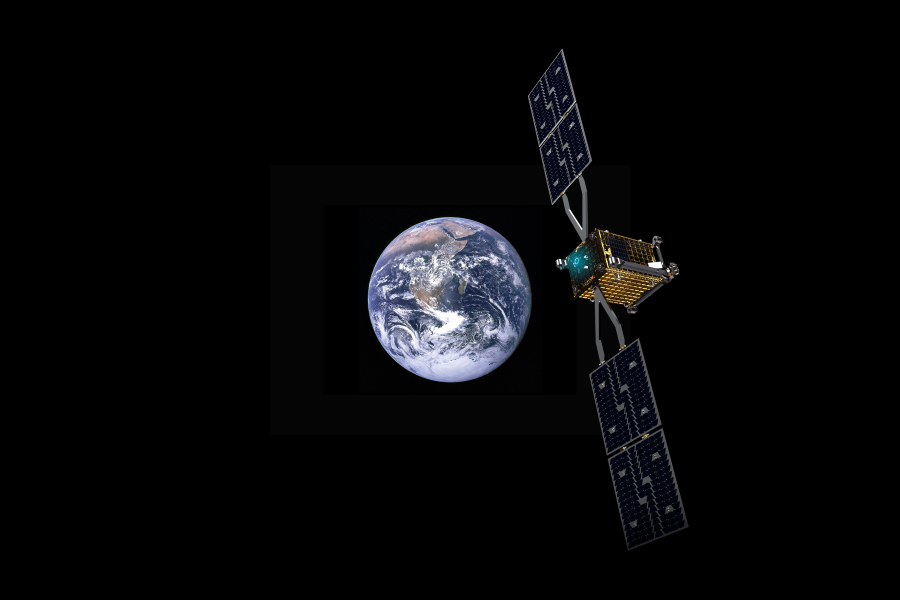The Space Force is eyeing a new marketplace to take advantage of commercial satellites that can move in geosynchronous orbit, the head of Space Systems Command’s Commercial Space Office (CSCO) said last week.
Speaking at AFA’s Air, Space & Cyber Conference, Col. Richard Kniseley said his office recently solicited ideas from industry for a program called “Maneuverable GEO” that would create a pool of vendors who can compete for task orders.
The Commercial SATCOM Office under Kniseley’s organization took a similar approach last year for its Proliferated Low Earth Orbit (PLEO) Satellite-Based Services program—more than a dozen companies were selected for the effort, which allows Pentagon agencies and services to take advantage of commercial satellite communications.
Maneuverable GEO will include SATCOM providers, but it will also address other mission areas such as position, navigation, and timing, and environmental monitoring, Kniseley told reporters.
“it’s not going to be experimental. It will be an actual acquisition vehicle that will be utilized by the CSCO office, but it will be open to anybody in the DOD,” Kniseley said. “I mean, most of the awards that we do through PLEO are for different agencies, the combatant commands. So as people come in with their requirements, we’re able to kind of formulate the best path forward there.”
The goal, Kniseley added, is to “exploit capabilities that are already out there,” a central tenet of the Commercial Space Office and the Space Force’s broader efforts to tap into the commercial market. Officials like Assistant Secretary of the Air Force for Space Acquisition and Integration Frank Calvelli say that given the cost and time it takes to build new satellites, the Space Force should follow a strategy of “Exploit What We Have, Buy What We Can, and Build Only What We Must.”
Maneuverable GEO adds a wrinkle to that by focusing on satellites that can shift around in orbit—a capability in which Space Force leaders have expressed interest, but which private industry is just starting to figure out. The ability to be dynamic in orbit can help satellites avoid adversary attacks, move closer to inspect threats, and more.
“That’s going to be a game-changer for us in the military, where you’re not at a stagnant orbit, and you’re able to drift from point to point, especially supporting us in the event of a regional or national war so that we can maneuver more of our capabilities and be more agile to the warfighter,” Kniseley said.
Tapping into the commercial market is also another sign that the Space Force is looking to bolster its own investments for space maneuver, which have been relatively modest to date. In fiscal 2025, the service requested just $14 million for research into space mobility and logistics, but followed that with a strategic funding increase for startup Starfish Space to launch and test a “jetpack” satellite that can dock with another satellite and propel it in orbit.
Yet the commercial market for space maneuver remains new and somewhat undefined, with both Space Force and industry officials expressing uncertainty as to whether the technology for servicing satellites can translate into a sustainable business model.
For his part, Kniseley said that Maneuverable GEO will allow his office to “onboard innovation” and expressed optimism that in at least some cases, space maneuver will make commercial sense.
“In the areas that were that we’re looking at near term, there’s a number of companies that are maturing and progressing very well,” he said.
The goal for Maneuverable GEO is to award a contract next year, Kniseley added.
“A lot of companies ask me about it constantly,” he said.
